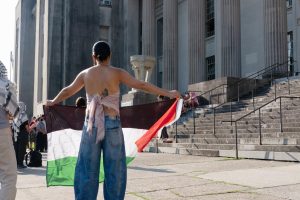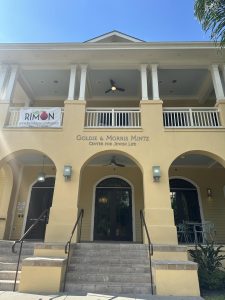OPINION | Black New Orleanians are disproportionately affected by omicron
February 22, 2022

On Sunday, Dec. 5, the Louisiana Department of Health confirmed the first official case of the omicron COVID-19 variant in Louisiana. By early January of 2022, Louisiana had surpassed the previous high peak of COVID-19 cases since the pandemic began in March 2020. By Jan. 13, the pandemic hit its highest daily rate yet, 12,691 cases. This daily rate is two times higher than the previous highest daily case rate which was reached in mid-August of 2021.
Black communities in Louisiana have been disproportionately devastated by COVID-19 since the pandemic began. At its start, 70% of COVID-19 related deaths in the state were among Black citizens despite the fact that they represent just over 32% of the state’s population.
In Orleans Parish the latest data as shown by the Louisiana Department of Health dashboard shows that of the 997 deaths, 790 were among Black community members. This means that about 80% of all COVID-19 deaths in the Orleans community were among the Black population despite the fact that they represent just 60.1% of the city’s population according to latest census data collected in 2021.
While looking at the most recent trends in the spread of COVID-19, which in the state of Louisiana at the moment consists entirely of the omicron variant, Black communities in Orleans Parish face disproportionately high mortality rates despite the more proportional rates of prevalence.
The LDH’s most recent data shows that Black Louisianans in Orleans Parish between Jan. 20 and Feb. 10 represent 74% of deaths despite accounting for just 60% of the population. However, when looking at the spread of COVID-19 in the same communities and cross referencing the rates with white Louisianans in the same parish, it is evident that the spread of cases is slightly below the population percentage in both groups.
This data would suggest that the virus is spreading equally across the parish, but Black residents are facing significantly worse health outcomes.
While a significant amount of research must still be done to further understand these data trends, a literature review conducted by the Centers for Disease Control and Prevention has indicated that underlying conditions affecting the immune system, cardiovascular system, or lungs such as diabetes, coronary heart disease, HIV, cancer, etc. can increase the rates of morbidity and mortality from COVID-19.
For a long time now, racial discrimination and the “repeated or chronic stress” it can cause has been theorized to be a contributing factor to the significant disparities in cardiovascular health that exist among people of color. There is mounting evidence supporting this hypothesis, such as the “significantly higher diastolic BP” among race-conscious Black people. Due to the correlation between cardiovascular disease and severe cases of COVID-19, the impact that stress caused by racism has on heart health should be taken into consideration when looking at the marked racial disparity in the number of Black New Orleanians dying from COVID-19.
In addition to keeping track of infection rates and mortality rates, the Louisiana Department of Health also keeps track of vaccination rates. As of Feb. 10, the number of Black people in Orleans Parish that have been completely vaccinated represent about 49% of the parish’s population while Black people make up 60% of the population. Conversely, 40% of the fully vaccinated population is white, and white people make up just 34% of the parish’s population.
Being unvaccinated is a significant contributor to mortality and morbidity rates for COVID-19, and the most recent data from the LDH has shown that those not fully vaccinated represent 69% of those hospitalized with COVID-19 and 61% of deaths. This data is concerning when looking at the number of Black New Orleanians dying from the omicron variant and the low numbers of vaccination rates, which may be related to vaccine access.
In an article published by The Lens, a local New Orleans news source, it was uncovered that during the initial rollout of the COVID-19 vaccine last spring, a disproportionately high number of vaccines were given to white members of the community.
Christina Stephens, a representative of Governor John Bel Edwards stated in an interview with The Lens that “If they said, ‘OK, everybody 55 and up is eligible,’ that numerically sounds like it was heading for a more equitable outcome, but we know what would have happened. All the folks with means and internet access would have been the first to get it.”
Conclusions as to why Black Orleans Parish residents are dying at higher rates than white residents can not be easily drawn due to the sheer number of variables and research that has still yet to be done.
However, through this brief overview of the ways in which the omicron variant is affecting the Black community, a more nuanced understanding of the ways in which systemic racial discrimination affects public health can be reached.








Leave a Comment